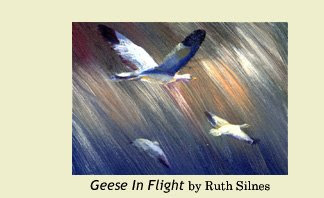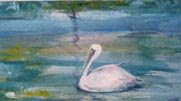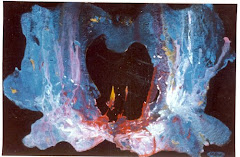 In my early years of painting I didn’t understand abstract works and yet I was an admirer of Salvador Dali. He was a good example of the necessity to understand drawing basics.
In my early years of painting I didn’t understand abstract works and yet I was an admirer of Salvador Dali. He was a good example of the necessity to understand drawing basics.I studied abstract painting under Professor Carl Lindstrom who was teaching at the de Young Museum in San Francisco. Lindstrom set up a group of different colored glass vases in front of a white curtain and threw a bright light on the vases that reflected colored rays of light on the curtain. There were approximately 100 students in the class and every painting was different.
For abstract painting you need to get into the frame of mind similar to doodling. Whatever you do viewers will see it differently than you. They may see faces, body parts, animals, ghosts or whichever way their imagination takes them. Let your subconscious have its way and you will keep improving your visual perception
Once you have doodled on your paper or canvas, check it out for balance. You may see things in it that you can emphasize and turn your abstract painting into an abstract surrealism.
Keep what you have done whether you like it or not. I have found that often paintings I did that I didn’t like were often the ones that sold first.
________________________________________________________
We draw as a means of communication. There is more to drawing than fine art. Drawing helps record what words cannot. Much is learned from drawing. We make charts, diagrams, maps, graphs, mathematical formulas and use drawing as a teaching tool.
The book “Thinking with a pencil” by Henning Nelms, (unfortunately out of print) tells of ways to use drawings in your work and in your hobby.
Not good drawing, but enough to get ideas across. Many years ago I wanted to make a dress pattern from scratch. I went to a number of pattern making classes and all of them, said to copy a ready made pattern and make needed changes. I was thumbing through “Thinking With A Pencil” and found an illustration of a pattern that showed the degrees of angles needed to make the pattern from scratch that I wanted…
For those of you who are interested in more study, there is a wide range of how-to and inspirational magazines and books whether you paint with acrylic, oil, watercolor, pastel pencil, ink or use mixed media. I recommend the following:
Books of interest for further study:
ART STUDENTS’ ANATOMY by Edmond J. Farris, Dover Publisher.
PERSPECTIVE FOR ARTISTS by Rex Vicat Cole, Dover Publisher.
COMPOSITION, A painter’s guide to Basic Problems and Solutions by David Friend, Watson Guptill Publications.
BRIDGMAN’S COMPLETE GUIDE TO DRAWING FROM LIFE, by George B. Bridgman, Weathervane Books.
THE ARTISTS HANDBOOK of Materials and Techniques, 5th Edition, revised and updated by Ralph Mayer.
THE NATURAL WAY TO DRAW, A working plan for Art Study, by Kimon Nicolaides, Haughton Mifflin Company.
Inspirational magazines:
American Artist
The Artists Magazine
Artist’s Magazine
American Artist Workshop
Free News letter: at www.arttalk.com/freeartists.htm
Free art lessons on the Internet
www.artgraphica.net
Learn how to sketch, draw and paint.
www.interactiveartschool.com/free-art-lessons.HTML
Oil painting techniques.
www.artacademy.com
Portraits
TV Art class schedules are on the Internet:
Go to Public Broadcasting/click on Arts & Drama/All channels.
Jerry Arnell, Fine Art School- acrylic
Buck Paulson, acrylic
Bob Ross, The Joy of Painting, acrylic
Gary Spetz, Painting Wild Places, watercolor
Frank Clark, Simply Painting, watercolor
It has been a pleasure working with you. If you have any questions please don’t hesitate to email me at info@ruthsilnes.com
All contents copyright © 2008 by Ruth Silnes
----------------------------------------------------------------------------------












2 comments:
Ruth,
This is wonderful. I have an artist son, and I'm going to send him your way. Thank you!
Dear Ruth,
I can't believe you are 93! Seems like yesterday when you were in the chatrooms at 82. My beloved mom-in-law is 92 and active just like you. I hope I can be that way as you both run circles around me now! I'd love to take your art classes as my brother is a famous canadian artist and my son and grandaughter are both artists. Oh and my oldest daughter Kim and her youngest son. A few of my younger grandsons are showing promise too. As for me, I'm hopeless--my talent lies in writing and that's it. I have the eye of an artist but can't transpose that to my hands. I'll definitely be buying your book for children to add to my collection--I have your memoir.
Best regards,
Micki
Post a Comment